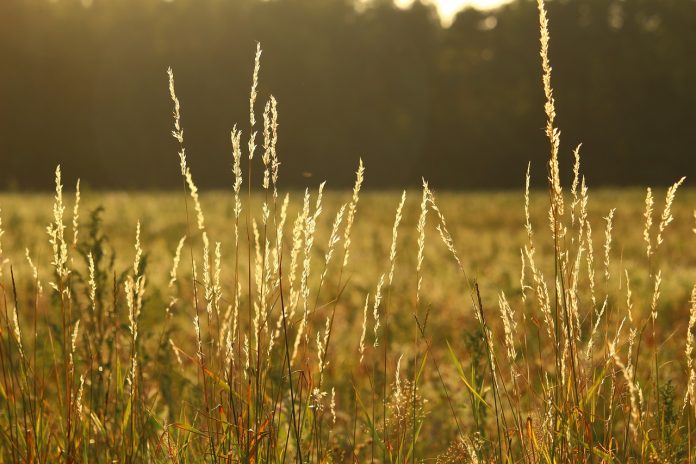Grass management is key to a productive pasture. Grass species do not all respond the same to factors influencing plant growth. How we manage these forages can influence what we have and determine our pasture productivity.
Intercepting sunlight is an important management factor relating to productivity. Our goal is having enough leaf area to intercept sunlight efficiently and effectively. When cool-season grasses like orchardgass are 6-10 inches tall and vegetative, they have a large amount of leaf surface area to intercept sunlight. As the pasture canopy high increases, older leaves at the base begin to turn yellow and seed heads emerge. Mature reproductive forages will have a reduced forage quality.
Pasture composition is partially determined by the frequency and intensity of defoliation and rest. Energy storage sites are the storehouses for plant leaf regeneration. Pasture plants that have been cut, grazed or were dormant must rely on these energy reserves to grow new leaf tissue.
The location of plant energy storage varies by species, but in general is located at the base of the plant and roots. That is why pastures that are of putting green height often have different forage growing in them than that found in a pasture managed at plant heights of 6-10 inches tall. Our management, and soil type determines what forage species we have.
This is why grazing management plans suggest residual plant stubble heights to be left after a grazing event. All pasture plants are dependent upon these energy reserves for regrowth. The rate of regrowth is dependent upon the extent, severity and frequency of defoliation. Leaf area and plant height remaining after grazing events can influence the rate of pasture growth for the entire season.
For example, a pasture that is constantly grazed to a short height of 2 inches or less will likely be composed of bluegrass, white clover and in the summer favor crabgrass, goosegrass and weeds that animals do not want to eat. Pastures that are consistently overgrazed without recovery periods evolve into a composition of plants that can survive this treatment. Animals that are forced to graze extremely short forage may have a difficult time consuming enough forage to meet their nutritional requirements. As forage plants get smaller in height with each successive bite the animal consumes less and less per bite affecting animal performance.
The Natural Resource Conservation Service recommends the following:
- Grass and legume mixtures should be grazed in a manner that favors the dominant or desired species.
- Height is average height when leaves are lifted in vertical position.
- At end of growing season, minimum regrowth is the critical factor that determines end of grazing except on pastures grazed only in fall and winter. When a grazing period ends, there should be photosynthetic residual remaining adequate to support vigorous re-growth. Less re-growth may be beneficial if frost seeding, or inter-seeding will be completed prior to the next grazing season.
- The last harvest of alfalfa, for pasture or hay land, should be made 35-45 days prior to the time when the first freeze normally occurs.
- In a rotational grazing system, spring grazing can be initiated when cool season forages have approximately 75% of their height. Livestock will need to be moved more rapidly until they are in a paddock where forage has grown to the desired height.
- If forages are exceeding the “begin grazing” heights consideration should be given to making hay or mowing these paddocks.
Grazing management has several factors that must be considered so that plant and animal productivity are maintained.
1. Know what forage you have.
2. Know when it is ready to be grazed.
3. Know when to remove animals, managing plant residual stubble.
4. Know how long it takes for the pasture to recover, which is seasonally based.
5. Limit the grazing area through stock density and paddock size to cause the fast removal of forage.
Managed grazing requires multiple paddocks, multiple water sources and a flexible fencing system. When planning a system consider how to get multiple uses out of pastures, waters and fencing. Paddocks must be arranged so that machinery can access these areas to spread fertilizer and lime, spread manure, cut hay and clip. Remember that paddock size may need to be temporarily adjusted for seasonal growth patterns of forage or stocking densities.
Water locations, when possible, should be planned to provide water to more than one paddock. These water locations can also be utilized for equipment access and may serve as potential entrances to other paddocks. It is not a simple process to develop a grazing system, and they are often built upon for many years. Before making changes visit some grazing systems. Forage management can be different and unique to the livestock species, soil type, slope, drainage, use of the forage, livestock overwintering needs and breeding program.
Contact your local extension office, soil and water and NRCS office to locate producers in your area where you can gather ideas as you development your grazing system.













